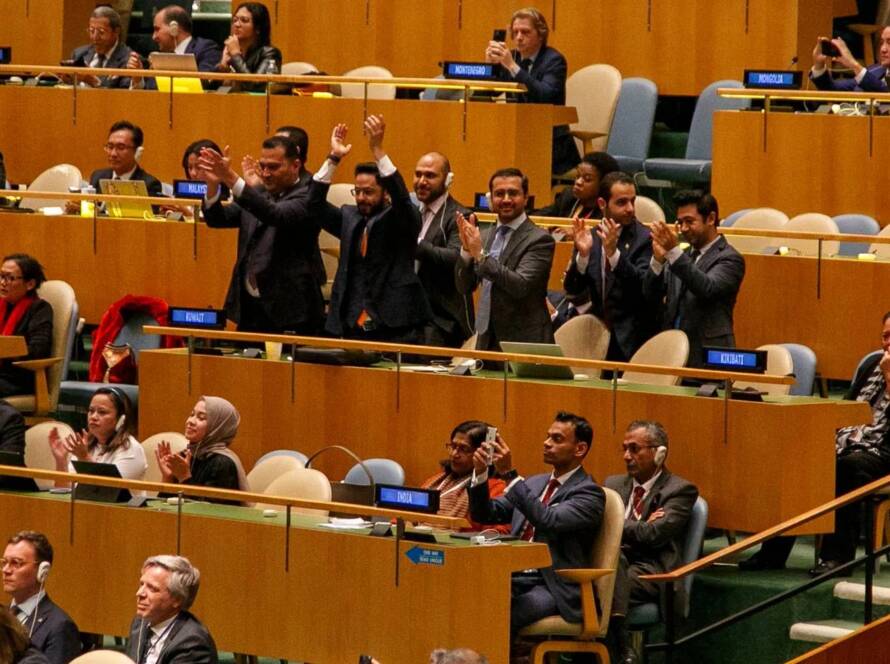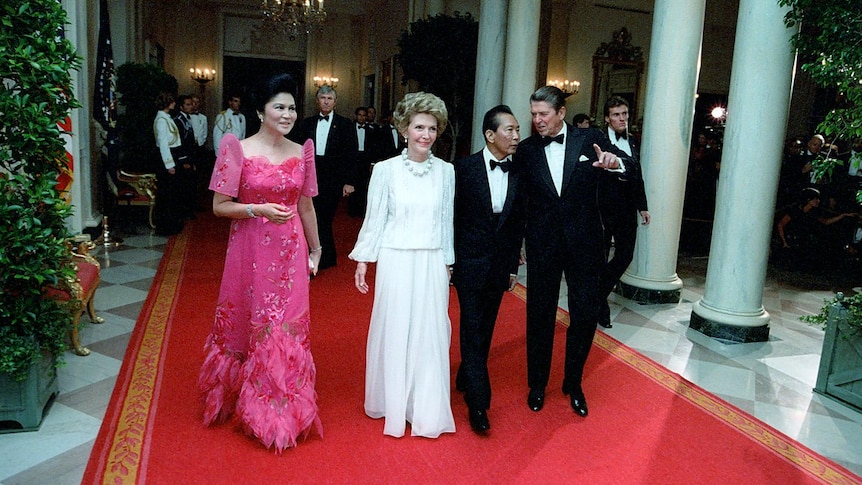By Chenuka Elwitigala
“They are delulu with no solulu, Mr Speaker.”
Australian Prime Minister Anthony Albanese grabbed attention of netizens worldwide with this statement, a rather irresistible dish of Gen Z slang, during his 2025 budget speech.
Within hours, memes flooded TikTok and Instagram reels spread far and wide, and the phrase was trending worldwide. This was not just a moment of comedic banter in parliament; it was a calculated attempt to gain traction among the youth voter base in the recent 2025 federal election since Gen Z and Millennials made up the majority of the electorate for the first time.
In this election, social media was not merely a campaign tool. It was truly a frontline in the electoral battlefield where we witnessed catchy slogans aimed for virality, TikTok trends followed by candidates and political jabs towards the opponents in the form of memes. Another significant development was the extensive use of Artificial Intelligence (AI) as a tool for content creation and as an algorithm to amplify audience engagement.
Electoral Outcome
The 2025 Federal Election held on May 3 this year, which was expected to be a close contest between the Labor Party and the Liberal-National Coalition, resulted in a landslide victory for the incumbent Labor government. It surpassed several electoral records. Labor secured 93 seats in the House of Representatives, making it the highest in the party’s history and the largest seat count ever achieved by a single party in Australian history.
This total is also the second highest overall, falling just one seat short of the Coalition’s record of 94 seats from 1996, with seven seats still undecided.
Conversely, the Liberal-National coalition suffered a significant loss in dropping to forty seats while its leader Peter Dutton lost his own seat, making the first time a sitting opposition leader has been unseated while Sussan Ley is to replace him as the party leader. The Greens faced an even more devastating outcome, failing to win any seat and seeing their leader Adam Bandt lose his seat after 15 years in parliament.
The New Campaign Trail: Social Media as the Main Arena
The 2025 election cycle witnessed a remarkable departure from the orthodox election campaigning methods like door-to-door canvassing, town hall meetings and television advertisements. Instead, parties and candidates focused on heavily expanding their digital presence through platforms such as TikTok, Instagram, YouTube, Facebook, influencers, and podcasts.
They invested in digital resources in these campaigns to effectively deliver their campaign promises to the target audiences in specific electorates as well as to attract median voters as suggested by Down’s Convergence Theory. Data from WhoTargetsMe (January 1 – May 3, 2025) show that the Labor Party was the top spender on digital advertising across Google and Meta. Its total spending amounted to AUD 10,212,089, while the Liberals and Greens could muster AUD 8,056,541 and AUD 1,075,476 respectively.
These figures do not include spending on TikTok, nor do they cover podcast sponsorships, influencer partnerships, and other digital outreach efforts, since their funding sources are not publicly known. TikTok became the forerunner in this digital battlefield with Labor Party leading the content game by posting 437 videos and amassing 150,000 followers. The Liberal Party, with 215 videos, reached 125,000 followers. Conversely, despite posting 255 videos and having the largest following of 223,000, the Greens did not manage to achieve an electoral success.
Party by Party: The Digital Strategies
The Labor Party’s campaign led by Paul Erickson centralized the digital campaign around TikTok which blended politainment with campaign messaging, which garnered millions of views. The campaign promoted its core policies which were strengthening Medicare, introducing tax cuts, cutting student loans, increasing renewable energy production and affordable housing.
The video formats were rather informal, often leveraging the meme culture, famous CapCut templates with trending audio tracks and even featured so-called ‘#italianbrainrot’ content which went viral recently. AI generated video integration in the campaign was also a noteworthy observation. A considerable number of videos focused on rebutting the campaign promises of the Liberal-National coalition and portraying the burdens the Australians will have to face if Peter Dutton gets elected as the PM.
Furthermore, they utilized various social media influencers to further disseminate their message to the public, while Anthony Albanese appeared in multiple youth-focused podcasts such as Abbie Chatfield’s “It’s A Lot.”
Albanese’s “They are delulu with no solulu” statement in parliament was made in response to a dare by Nikki and Lucy on the “Happy Hour” podcast which was later turned into a DJ track to further attack the Liberal Party. These strategic decisions represented the calculated efforts of the party to position Anthony Albanese and the party relatable to the younger generation of voters and resonate with the youth demographic which was crucial for their electoral success.
The Liberal campaign was centered around its campaign slogan “Let’s Get Australia Back on Track” which resonates to Trump’s “Make America Great Again” slogan. Their campaign made efforts to promote their promises to build new nuclear power plants, boost non-renewable energy production, increased defense spending and tighten immigration policies and the commitment to lower inflation.
The campaign featured similar elements to the Labor campaign such as the incorporation of the meme culture and CapCut template edits. Everyone was caught off guard when the party dropped a studio recorded hip-hop diss-track titled “Leaving Labor” on Soundcloud on April 14 which targeted the Labor government’s policies leading to a cost-of-living crisis. Yet, it received mixed reception with many calling it out as a desperate move to appeal to the youth bloc of votes and some even criticized it for being cringeworthy.
Additionally, they experimented with an interactive video game titled ‘Escaping Albo’ to engage the voters through gamification. Despite running a platform-native and a localized campaign, it failed to appeal to broader audiences through social media influencers which Labor was able to capitalize.
They also faced a major backlash after blocking a social media influencer named Ray William Johnson which they later posted a video apologizing for it while also turning it into an advertisement stating, “Now get out today and vote Liberal, so we can unblock our economy too.”
Conversely, the Greens digital campaign was characterized by policy-rich and youth-oriented content.
They produced casual selfie-style videos where the leaders directly engaged with the viewers to explain their policies on climate change, renewable energy, taxation, housing, education, and childcare. They opted for authentic and substantive educational content while drifting away from the meme-heavy campaign that was led by its rivals.
Yet, they managed to gain the attention of the youth through social media influencers and engaging in podcasts. For example, its leader Adam Bandt’s video clip of DJ-ing at a night club went viral when it was posted by Abbie Chatfield on her social media while promoting voting for the Greens.
Greens Senator Nick McKim’s Fortnite Twitch stream was another innovative campaign strategy to attract the youth voters, where he explained Greens policies during a livestream. Additionally, the Greens campaign featured a giant toothbrush prop to signal their support for the inclusion of dental care under Medicare. This gained attention both on social media and national television. Despite such gimmicks, the Greens failed to match the scale of their competitors, making the campaign rather a collection of viral moments than a cohesive effort that was translated into an electoral success.
Advance Australia’s Assault: How the Right-Wing Digital Blitz Decimated the Greens
Advance Australia, a far-right lobby group with deep financial and political ties to the Liberal Party, had a social media campaign budget of USD 1,762,435 for the 2025 election. It led a massive digital assault on the Greens and Albanese. Yet it declared that its focus would be to prevent the Greens getting elected since they had posed a threat to Dutton’s conservative agenda.
The digital campaigns featured fear-based misinformation to spread misleading narratives on the Greens’ policies, to manipulate voter preferences and ignite distrust while exploiting the loopholes in the “Truth in Advertising laws” in Australia, without facing legal consequences. This campaign was further fueled by right-wing groups such as Better Australia and J-United, where the Greens struggled to mount a successful counter-offensive leading to its catastrophic loss.
Key Takeaways and What’s Next?
These campaigns had one common motif: the increased utilization of social media as the political campaign battleground. This election cycle became the most digitally oriented election campaign ever in Australia. And it can be predicted that future elections globally will follow this trend to utilize more immersive technologies to drive their campaigns while TikTok and other social media platforms will become the primary sources of information consumption.
Yet this has increased challenges in digital ethics with the inclusion of deepfakes, AI generated content, and misinformation campaigns to manipulate the voter information landscape, since individuals have little to no control over their feeds. Information they consume can impact their rational political decision-making ability and thus become an integral part of democracy.
Social media manipulation through misinformation can undermine the legitimacy of democracies, something the world witnessed during the 2024 Romanian presidential election, in which J. D. Vance’s comment at the Munich Security Conference – “But if your democracy can be destroyed with a few hundred thousand dollars of digital advertising from a foreign country, then it wasn’t very strong to begin with “ – resonated with the idea of consuming social media content with caution to preserve democracy. The Australian Electoral Commission (AEC) stepped in with regard to this matter by expanding its “Stop and Consider” campaign to improve digital literacy and combat misleading election communication.
Digital Democracy, firmly implanted in Australia, will remain and expand exponentially over the years across the globe. Despite it providing a platform for direct communication with the candidates and the parties, it must operate within a policy-based framework that ensures accurate information and fosters mutual respect among political opponents, which are the core values that embody the true essence of democratic principles.
Chenuka Elwitigala is a first-year undergraduate pursuing a dual academic path: Politics and International Relations through the University of London degree program at Royal Institute Colombo, alongside Law studies at the University of Colombo. He can be reached through chenukaelwitigala45@gmail.com.
Factum is an Asia-Pacific-focused think tank on International Relations, Tech Cooperation, and Strategic Communications accessible via www.factum.lk.
The views expressed here are the author’s own and do not necessarily reflect the organization’s.


